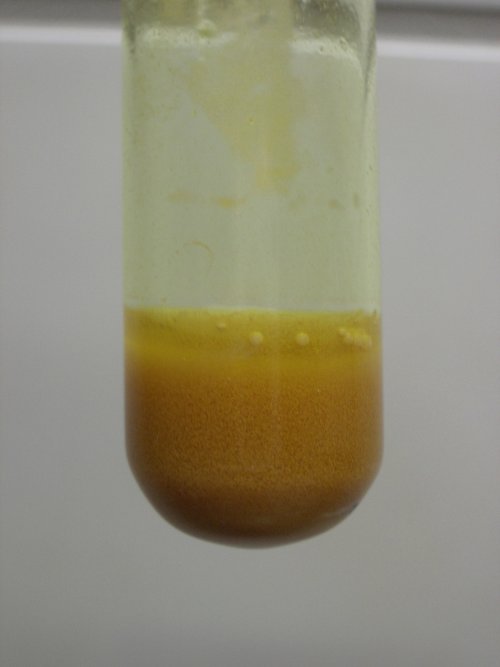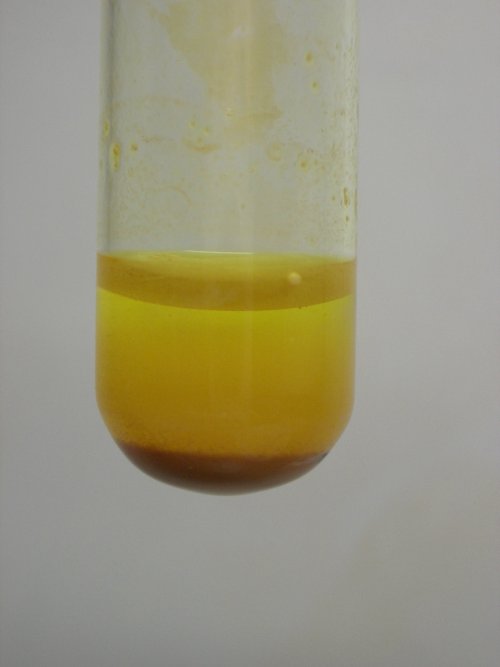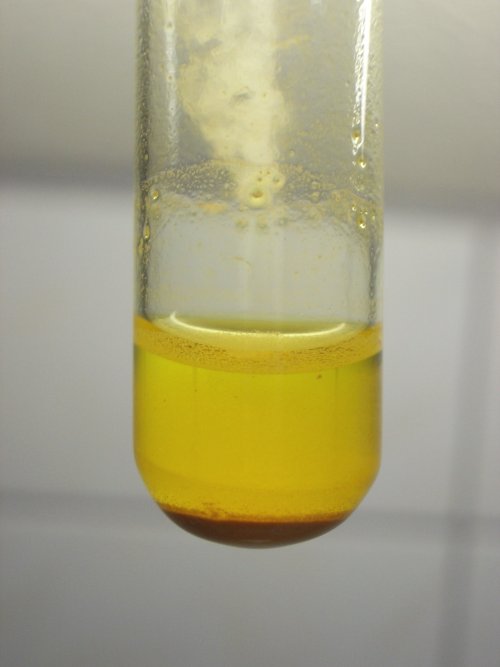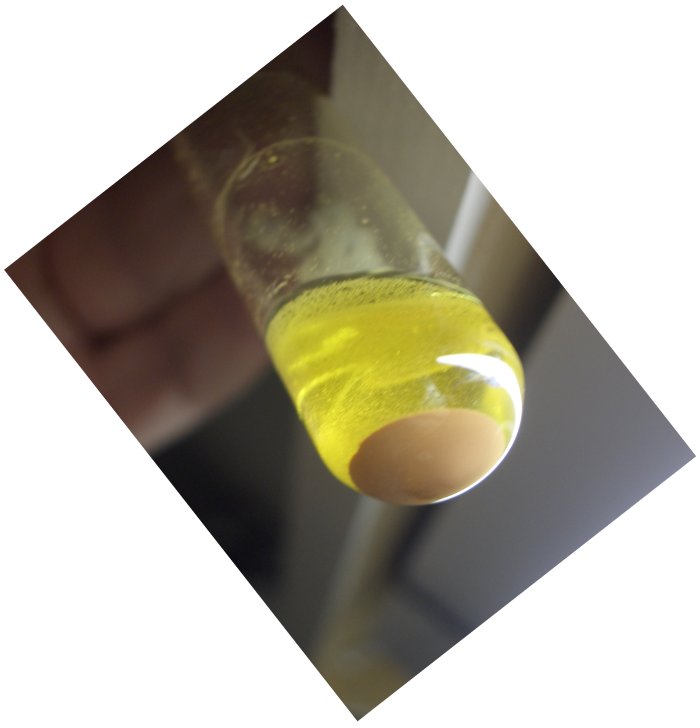


Precipitate of bismuth bromide/iodide
In experiment 1 a precipitate of bismuth iodide is prepared by adding some iodide to an excess amount of bismuth (III). In this experiment it is shown that a mixed bromide/iodide precipitate can be formed by adding a concentrated solution of potassium bromide with a small amount of potassium iodide to an excess amount of a solution, containing bismuth (III).
The experiment is done as follows:
- Prepare a solution of (basic) bismuth nitrate in dilute nitric acid, such that an acidic clear solution is obtained.
- Prepare a concentrated solution of potassium bromide and potassium iodide. The amount of potassium iodide is less than 10% of the total amount.
- Add a few drops of the potassium bromide/iodide solution to the solution of (basic) bismuth nitrate. This results in formation of a brown precipitate in a yellow liquid.
The three pictures below show the precipitate and the liquid above the precipitate. The precipitate quickly settles at the bottom of the test tube.



The left picture shows the contents of the test tube, just after adding the potassium bromide/iodide solution to the bismuth (III) solution. The middle picture shows the same test tube half a minute later. The right picture shows the same test tube, but with light partially transmitted through the liquid. It shows that the liquid is yellow. The precipitate is reddish/brown.
In the picture below, the precipitate is shown, with light from below. The picture is taken from a position below the test tube. This picture shows that the precipitate is fairly light and that it has a brown/orange color.

When more potassium bromide/iodide solution is added, then the precipitate dissolves again and the liquid becomes clear and yellow, just as in experiment 2 and experiment 3.